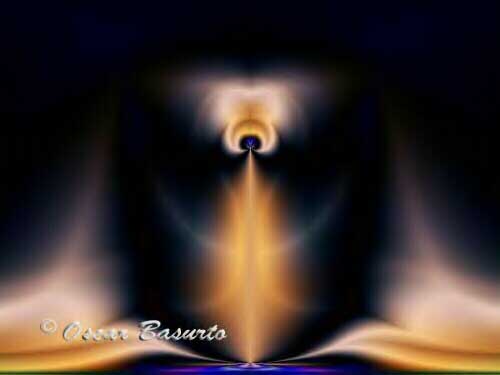The Alexander Technique: The Conscious Use of the Self
By Rebecca Poole
CURRENTLY IN MY second year of training to become a certified teacher of the Alexander Technique, I was first introduced to the practice nine years ago at Trinity Repertory Conservatory when it was offered as part of their Graduate Acting program. Though I knew that F.M. Alexander himself was an actor, I came to realize that the Alexander Technique only had as much to do with acting as my life did. In other words, presuming that acting is me being myself under imaginary circumstances, if I do not know where "center" is, if I do not have a strong awareness of my physical and mental habits, I cannot hope to grow beyond them onstage or off.
In a sound-byte, Alexander can be described as a method of psycho-physical re-education. But since this description also fits religious cults and North Korean prison camps, I prefer not to use it. By "psycho-physical," I simply am referring to the human organism as an interrelated whole, without body and mind split from each other. By "re-education" I mean the process of discovering again the proprioception (the sixth sense) with which every human is born, and learning how to use and direct it consciously. I'd describe it as peripheral vision for your entire self. A constant mind-body awareness of where various parts of you are in relation to your whole self, as well as in relation to your physical surroundings.
Much has been written on the Alexander Technique (see below for a short reading and website list), but it is experiential work. While reading may enhance your understanding of the technique, you cannot "do" it by reading about it; you must have private lessons with a qualified teacher. Teacher certification requires three years (1600 hours) of study within a certified program where the student-teacher ratio is no greater than five to one. Be wary of uncertified practitioners: the well-intentioned aerobics instructor who has had a few Alexander lessons simply is not going to be able to guide you well.
While I dislike defining things by the via negativa, the experiential, individualized nature of Alexander makes a precise description of the work difficult to articulate outside the context of a lesson. So the Alexander Technique is not:
Therapy or massage -- it is not a treatment.
A breathing-centered practice (though it does effect the breath).
About static posture (while it does deal with the head-neck-back relational balance).
A cure (though it can bring much relief from pain, as I happily discovered).
A "doing;" rather it is an "undoing."
In a typical lesson (which can last anywhere from half an hour to an hour), an instructor uses light touch and mirrors to guide the student through common, everyday movement, such as sitting, standing, and walking. The instructor calls the student's attention to areas of his / her body that are overly tense (the student may perceive these areas as stiff or painful) and so are interfering with the student's optimal use and functioning. For it is only when the student becomes aware (physically & intellectually) of her harmful habitual tension that she can choose to not use herself in such a way. Usually, however, the habit is so ingrained that it feels "normal" to the student, who may need visual proof (through mirrors or photos) that his thinking (and physicality) is skewed.
Let's say I begin carrying a book-bag on my right shoulder in first grade. I bend a little to the left when I walk with the bag in order to maintain my balance. I also have certain opinions about school (I don't want to go, I have to get there on time or else I'll be humiliated in front of others, I have to do well at everything, a kid threatens me every day, etc.). Through the years, I carry more and more books on my right shoulder. My reactions to school haven't changed much, but I manage and achieve a lot in spite of my anger / fear. By the time I graduate from high-school, I walk bent a little to the left even when I am not carrying my book-bag. In college, I find a course of study I enjoy, but the books are even heavier, and I now have the added pressure of having to work in order to pay for tuition and living expenses. I average around five hours of sleep per night and am exhausted; yet I have performed so well that I can write my own ticket to grad school. I walk leaning to the left almost always and my neck aches constantly. I exercise more to strengthen my stomach muscles because a physical therapist tells me my back problems are due to weak abs. At age 23, I wake one morning to discover I am not able to lift a pot of coffee with my right hand or turn my head to the right. My body has compensated for my tilt and related physical/emotional stress by overdeveloping neck and back muscles, which in turn are pulling my vertebrae out of alignment, thus causing me pain. Despite the pain, I have lived off-balance for so long that I feel being tilted to the left to be normal or straight. Conversely, when I stand straight, I feel as if I am tilted to the right. Once I am conscious of my habit, however, I can choose not to do it and re-learn the coordination nature intended me to have.
For example, if I am typing at my computer and start to feel pain in my neck, I know I am using more tension than I need to complete the task. I then can connect to the pain with my thought and think to "undo" the hurtful tension, as one would relax a curled bicep. However, if I choose not to acknowledge the pain and the fact that I am hurting myself by continuing to type in this manner, then there are deeper issues at work. I, of course, can choose not to address those issues, but I know I will not be helping myself by making that particular decision.
Until I encountered the Alexander Technique, I suffered from chronic, recurring neck and upper-back pain. Massage and chiropractic work helped tremendously; however, their effects were temporary, and I'd invariably find myself incapacitated in a few months or a year. As a twenty-something, I found the prospect of needing someone to help dress me or tie my shoes whenever my back went out for the rest of my life to be extremely upsetting. Alexander lessons gradually taught me how to help myself, how best to use myself, and I have not had a neck or back episode in five years.++
*****
Recommended Resources:
stat.org.uk -- Website for the Society of Teachers of the Alexander Technique (STAT), the governing body for Alexander teachers in the U.K. Provides clear details and a teacher-finder.
alexandertech.org -- Website for American Society for the Alexander Technique (AmSAT), the governing body for Alexander Teachers in North and South America. Provides teacher-finder; and offers lots of articles; but I find the STAT site much clearer.
Body Learning: An Introduction to the Alexander Technique, by Michael Gelb -- The most direct and complete introductory book to the Alexander Technique out there.
Use of the Self, by F.M. Alexander -- The most accessible of his four books. Alexander himself describes his process of discovery. Sentences get a little Victorian, peppered with delightful phrases such as "debauched kinesthesia."
The Man who Mistook His Wife for a Hat, by Oliver Sacks -- A collection of case studies regarding people with seriously damaged proprioception. Dr Sacks is best known as the author of Awakenings, upon which the film (starring Robin Williams and Robert De Niro) by the same title is based.
|

